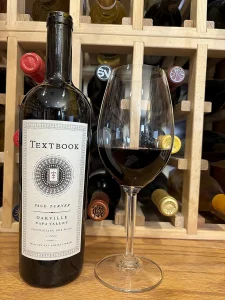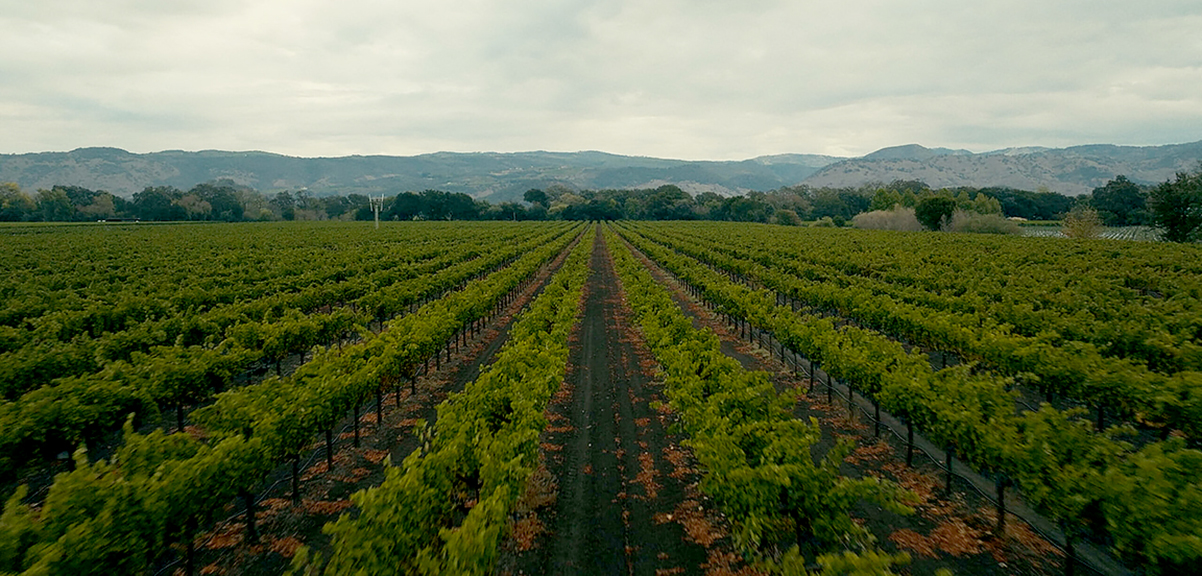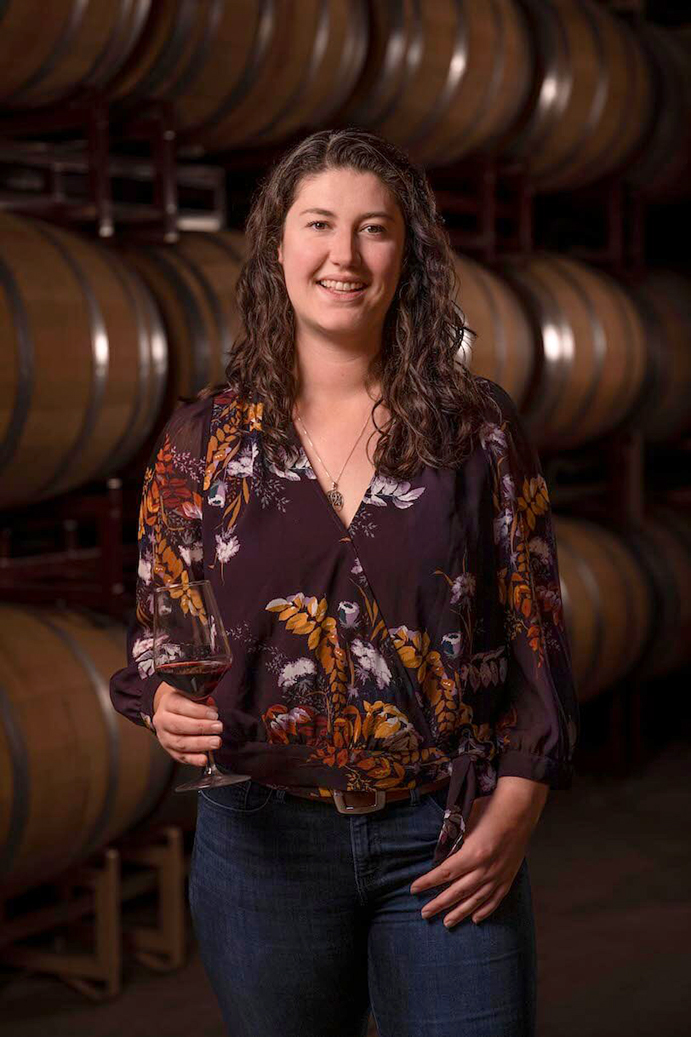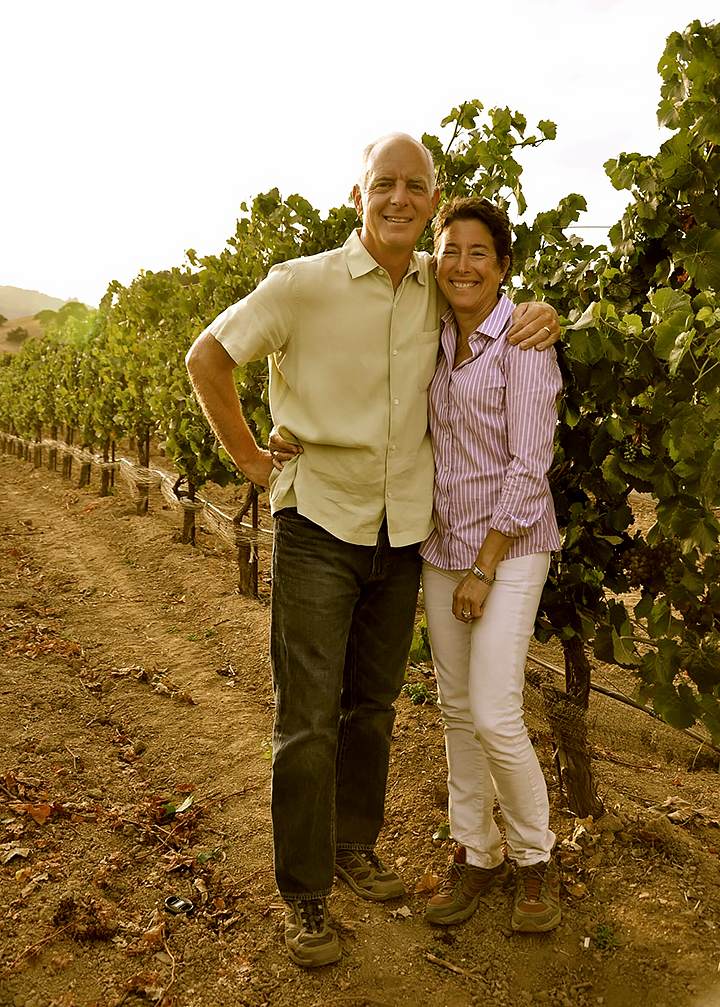Deep ruby color; vibrant blue fruit; blueberry, blackberry, black cherry, blackcurrant, plum, boysenberry, baking spices, chocolate, vanilla, clove on the nose and palate.

Dry; pleasant tannins; good acidity (3.61 pH; 5.8 g/L TA ). Medium body. Exceptionally smooth, delicious. Harmonious blend of 58% merlot, 42% cabernet sauvignon from two prestigious Oakville sites: Holmes Vineyard, west side of Oakville, near to To-Kalon and downslope from Harlan Estate, and the certified organic Lincoln Creek Vineyard located near Opus One, Mondavi To Kalon, Jackson Family, Paradigm, and Gamble. Hand-harvested, field-sorted grape clusters. Cold soak for two days. Fermented in temperature-controlled stainless steel with extended skin contact (10 days for cab, 36 days for merlot). Aged 22 months in high quality French oak, including Nadalié and Giraud, 53% new. Malolactic conversion in barrel over the winter. 14.6% ABV
Jonathan and Susan Pey started Textbook Napa Valley in 2004. Jonathan spent a year in France when his father’s work transferred him there. There he discovered wine was as much a part of a meal as milk. Returning from abroad Jonathan earned his undergraduate degree in agronomy from the University of Arizona and began working as a sales manager for Kobrand Corp in New York City. During that time, he discovered Napa and centered on Oakville as the place he wanted to have a winery. And he made it so.
The Textbook name came about when Jonathan was tasting his first vintage from barrel. He remembers pulling out the wine with a wine thief into a glass and noticing the dark color, the density, the texture and the exotic aromas. He said something like, “this is classic Oakville Cabernet Sauvignon—so textbook like.” The name rang true and, surprisingly was not trademarked. He says his goal with his Napa Valley cab was to provide its varietal expression and make people want to say, “this is what Napa Valley Cabernet Sauvignon smells and tastes like.” The “Page Turner” wine got its name from Jonathan Pey’s 13-year-old daughter who loves to read. The winery notes the Bordeaux blend is “so good you simply can’t put it down—just like a great book.”

In 2019 and after the death of Susan in 2016, Jonathan sold the winery to Distinguished Vineyards & Wine Partners, a group whose parent company is Kirin Brewery Company in Japan that also is associated with Mercian, a Kirin subsidiary that owns wineries in Japan, France, and Markham Vineyards in the Napa Valley. Today, Jonathan makes small-lot gamay wine in France’s Beaujolais region.
Abigail Estrada is the principal in charge of vineyard sourcing and winemaking at Textbook today. A graduate of UC-Davis with a degree in viticulture and enology, Estrada honed her skills in Italy, New Zealand, and Israel as well as with U.S. makers—Domaine Chandon, Robert Mondavi, and Markham (a sister winery to Textbook) before joining Textbook. Her style is attained by “keeping the lots separate, tasting throughout the year, and then integrating the components to create a harmonious, complex, unmistakable Napa Valley style.” Abigail has expanded the Textbook portfolio to spotlight other wine regions, including Sonoma County (Chardonnay), Russian River Valley (Sauvignon Blanc), and Paso Robles (Cabernet Sauvignon).

Textbook Vineyards Page Turner Proprietary Red Wine, Oakville, Napa Valley, The Pey Family 2022 delivers pure expression of highest quality Oakville fruit. Sublimely smooth, velvety, delicious. Elegant finesse rather than brutish Napa fruit and alcohol bomb. Good length and complexity. $85
Pairing—Grilled, roasted beef; ribeye, filet mignon with herb butter. Lamb, herb-crusted lamb with rosemary jus. Venison, wild boar. Barbecued pork ribs with plum or cherry sauce. Beef short ribs, slow-cooked brisket. Roasted chicken with herbs; duck with cherry mostarda or plum glaze. Roast turkey with cranberry sauce. Can work with grilled salmon with herb butter, tuna steaks with pancetta or prosciutto; scallops wrapped in bacon. Tomato-based pasta dishes, lasagna, meat-lover pizza. Grilled vegetables: bell peppers, eggplant, zucchini; roasted root vegetables; ratatoulle. Cheese—Aged cheddar (Vermont Cabot Clothbound Cheddar, Wisconsin Pleasant Ridge Reserve), gouda, gruyère and other Alpine cheeses, manchego. Brie, camembert, muenster. Gorgonzola, roquefort, stilton. Fresh goat cheese; aged goat cheese, garrotxa.

